2022 Second report
Arctic Sea Ice Information Center, Noriaki KIMURA (Atmosphere and Ocean Research Institute, The University of Tokyo)
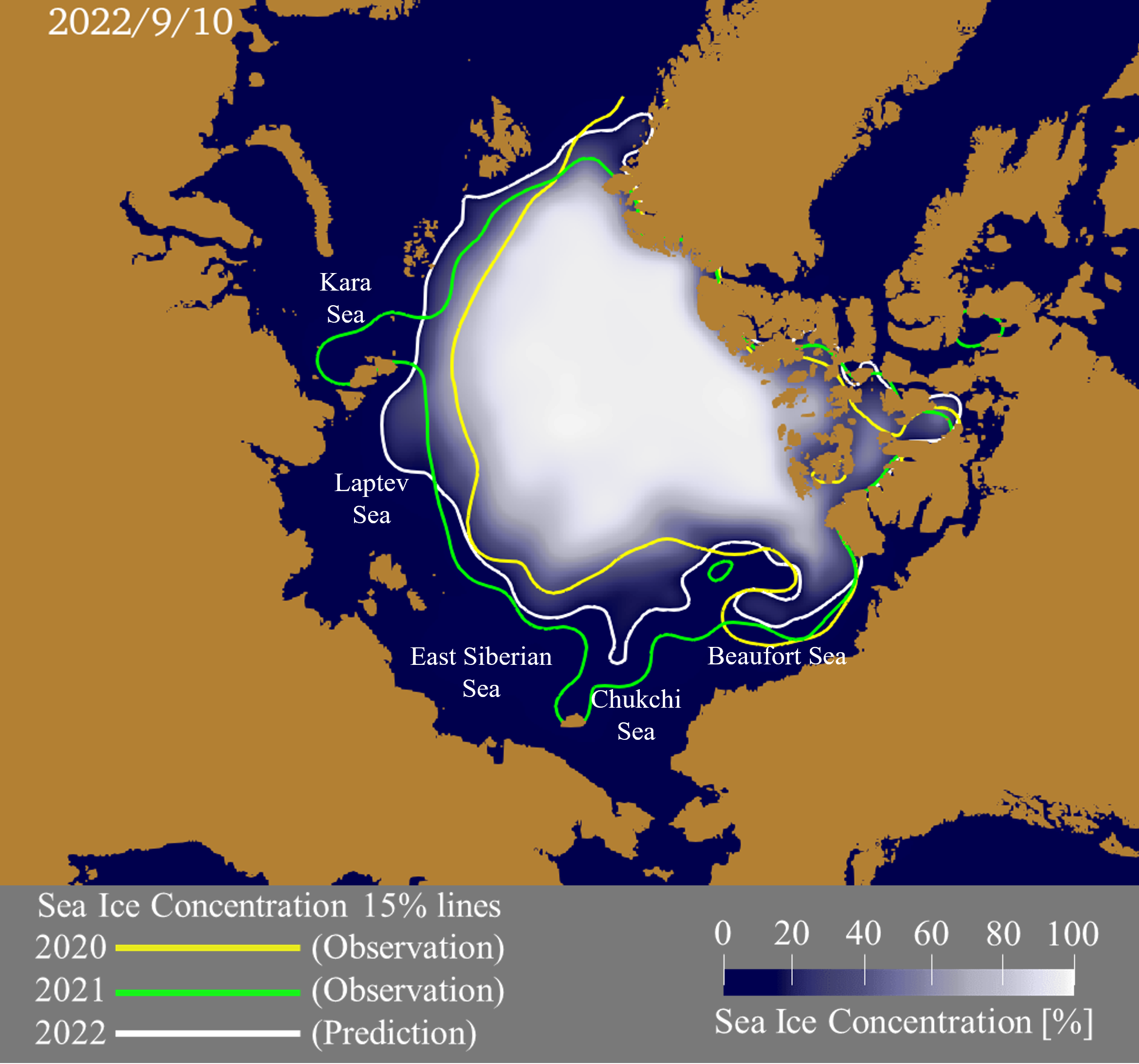
- Minimum ice extent will be about 4.44 million square kilometers in September. This is greater than in 2020 and less than in 2021.
- The Northern Sea Route will open around August 12, and the Canadian side except for Canadian archipelago will open around July 30.
- Sea ice will remain on the Canadian archipelago side of the Beaufort Sea.
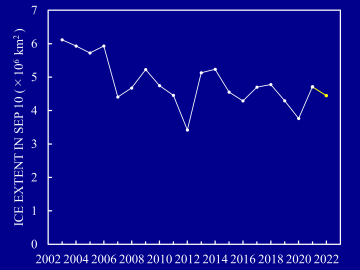
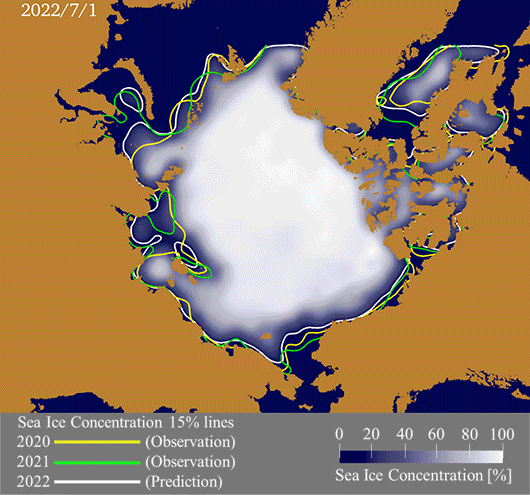
The white line indicates the ice edge for 2022 and the colored lines for 2020 and 2021.
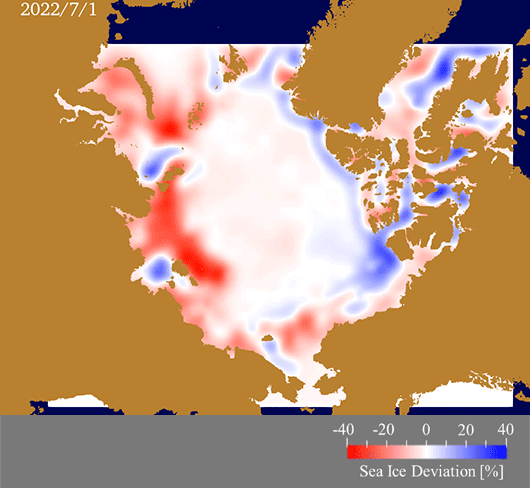
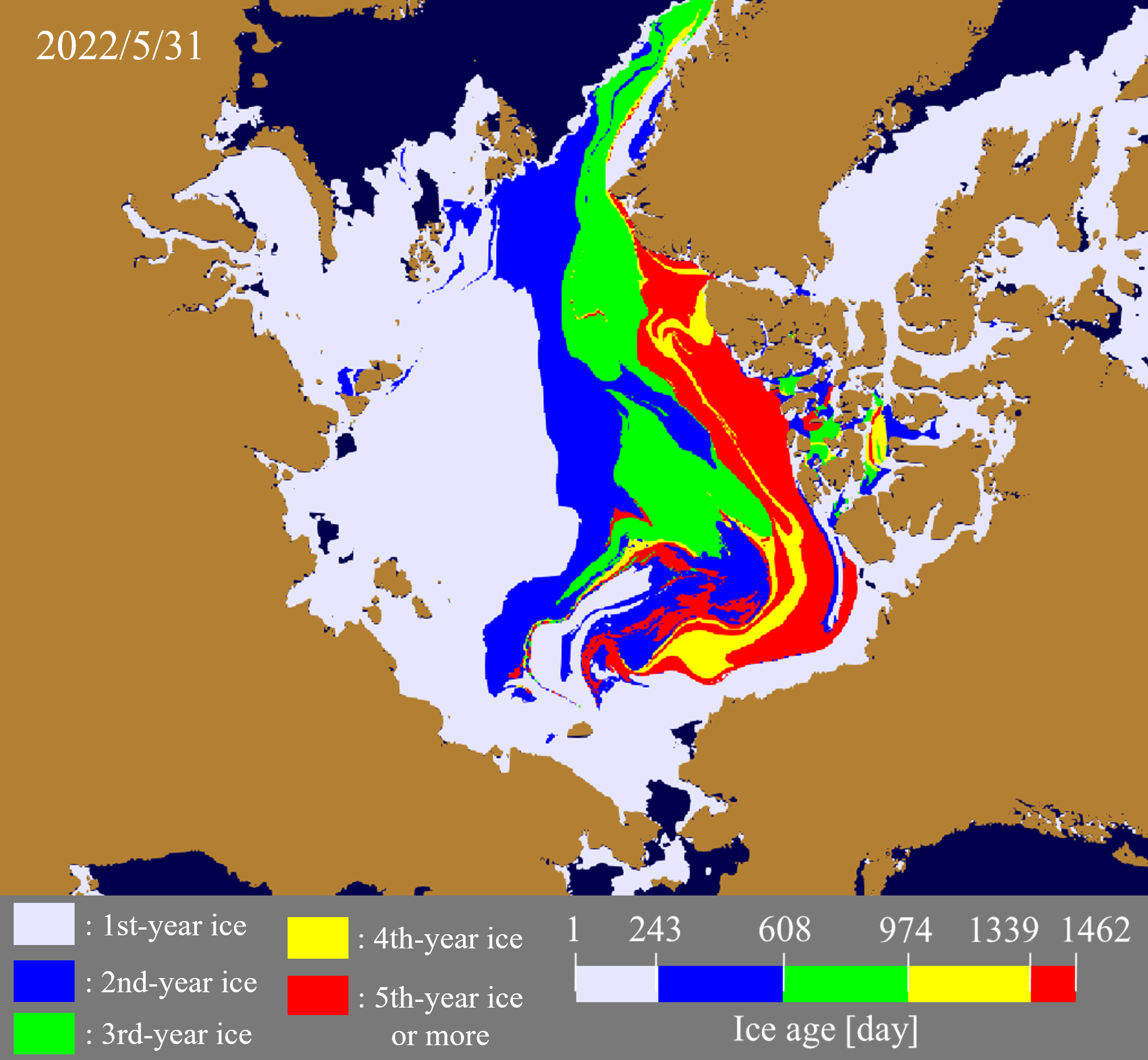
The predictions were based on two factors: “sea ice redistribution from winter to spring,” and “accumulated absolute value of sea ice divergence”. The sea ice redistribution was determined from the sea ice movement from December to the end of May, and the accumulated absolute value of the divergence was calculated from daily values for 90 days until the end of May. The “accumulated absolute value of sea ice divergence” is a new parameter to replace “sea ice age” and “mean divergence of sea ice,” which were used in the first report published last month, and is an indicator of the ease of sea ice movement. In areas where this value is large, sea ice is expected to be thin and easy to melt, as it is easy for sea ice to move freely. On the other hand, areas where this value is small are covered by firm, thick sea ice and are less likely to melt. We used this value for this forecast because, based on our analysis of historical data, differences in multi-year ice melting speeds can be considered more accurately than using sea ice age.
The Arctic sea ice extent on September 10, when the sea ice minimum will be about 4.44 million square kilometers. This is greater than in 2020 and less than in 2021. This is also almost same as the first report (about 4.46 million square kilometers).
Summer Arctic sea ice extent has been declining rapidly in recent decades. While the decline was less evident between 2013 and 2019, it declined again significantly in 2020. And on September 10, 2020, the Arctic sea ice extent was 3.77 million square kilometers, the second smallest after 2012. On the other hand, in 2021, sea ice remained from the Beaufort Sea to the Chukchi Sea, and the sea ice extent on September 10 was approximately 4.72 million square kilometers, a significant increase from the previous year. This year’s sea ice extent will be slightly smaller than in 2021 but considerably larger than in 2020, indicating that the sharp decline in 2020 was transitory.
The daily anomaly of the sea ice concentration in Figure 4 shows that sea ice the Russian side will retreat earlier than usual. On the Canadian side, sea ice melting will be slower than usual in July in the area from the Kara Sea to the Beaufort Sea, and more sea ice will remain in the Kara Sea in August and September than usual. This is likely due to the thick and firm sea ice more than 4-year-old extending from the Beaufort Sea to the Chukchi Sea, as seen in Figure 5.
Russian side
Sea ice will retreat almost at the same time and in similar distributions in 2021. The Northern Sea Route will open around August 12. The route opening date has been determined with some leeway, so the actual date may be a little earlier than this.
Canadian side
Sea ice from the Chukchi Sea to the Beaufort Sea will retreat at about the same time in 2020 and 2021. Sea routes of the Canadian side will open around July 30. Sea ice on the Canadian archipelago side of the Beaufort Sea will remain as it did in 2020 and 2021. This is due to the fact that old ice, more than 3 years old since its formation, is spread over this area following 2020, 2021 (Figure 4). Therefore, it is possible that the sea ice that remains may also be thicker, and caution should be exercised.
You can also check the daily forecast on Arctic Data archive System (ADS) at National Institute of Polar Research. ADS has also started releasing sea ice age data (daily and yearly) .
If you have any questions about satellite monitoring of the Arctic Ocean, sea ice forecasting, or the forecasting methods used here, please contact the Arctic Sea Ice Information Center(sea_ice@nipr.ac.jp)
The sea ice forecast and its basic research were started in GRENE, continued to ArCS Project, and has been conducted in ArCS II Project since 2020.


